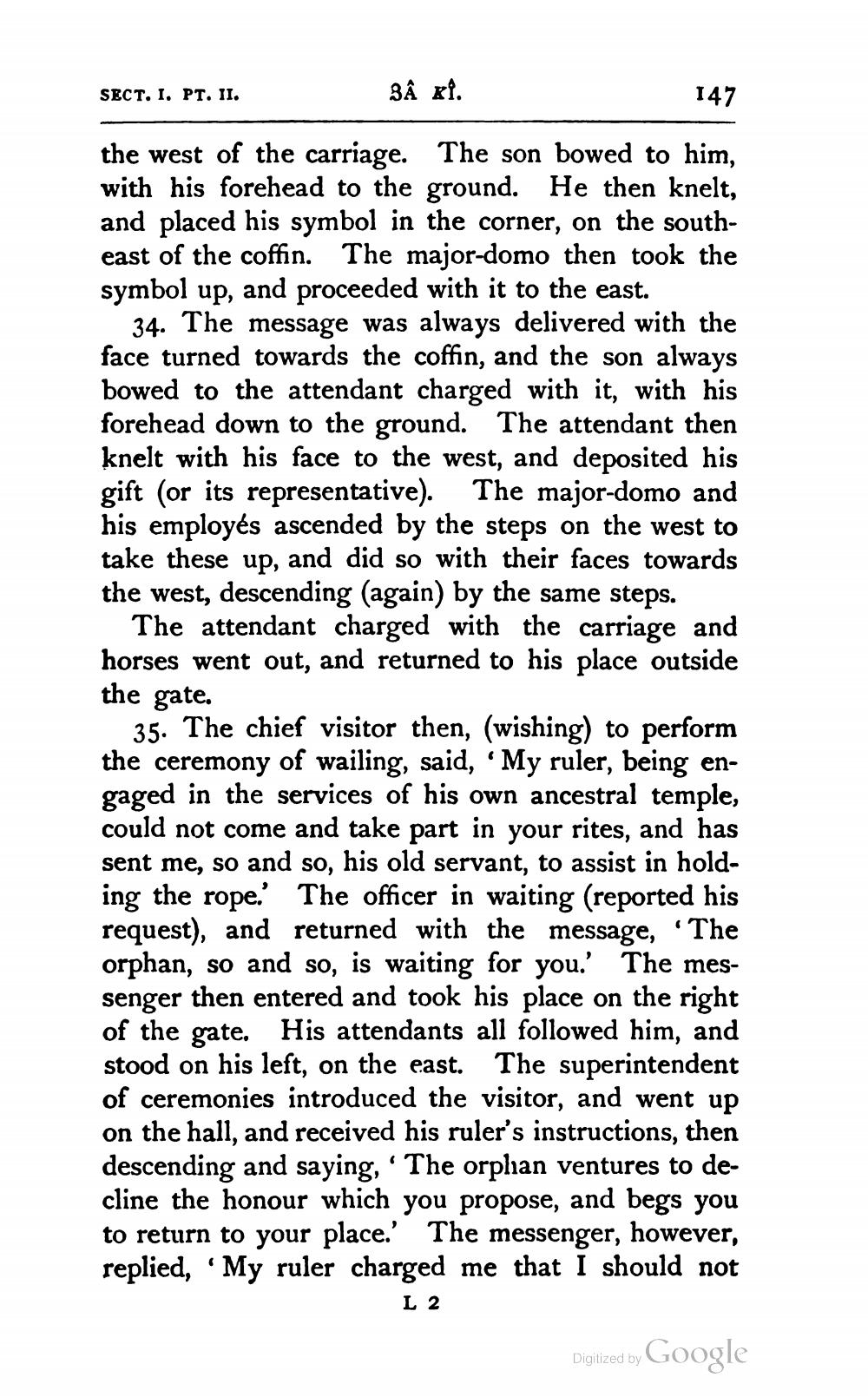________________
147
the west of the carriage. The son bowed to him, with his forehead to the ground. He then knelt, and placed his symbol in the corner, on the southeast of the coffin. The major-domo then took the symbol up, and proceeded with it to the east.
34. The message was always delivered with the face turned towards the coffin, and the son always bowed to the attendant charged with it, with his forehead down to the ground. The attendant then knelt with his face to the west, and deposited his gift (or its representative). The major-domo and his employés ascended by the steps on the west to take these up, and did so with their faces towards the west, descending (again) by the same steps.
The attendant charged with the carriage and horses went out, and returned to his place outside the gate.
SECT. I. PT. II.
3â xi.
35. The chief visitor then, (wishing) to perform the ceremony of wailing, said, 'My ruler, being engaged in the services of his own ancestral temple, could not come and take part in your rites, and has sent me, so and so, his old servant, to assist in holding the rope.' The officer in waiting (reported his request), and returned with the message, 'The orphan, so and so, is waiting for you.' The messenger then entered and took his place on the right of the gate. His attendants all followed him, and stood on his left, on the east. The superintendent of ceremonies introduced the visitor, and went up on the hall, and received his ruler's instructions, then descending and saying, 'The orphan ventures to decline the honour which you propose, and begs you to return to your place.' The messenger, however, replied, 'My ruler charged me that I should not
L 2
Digitized by
Google




